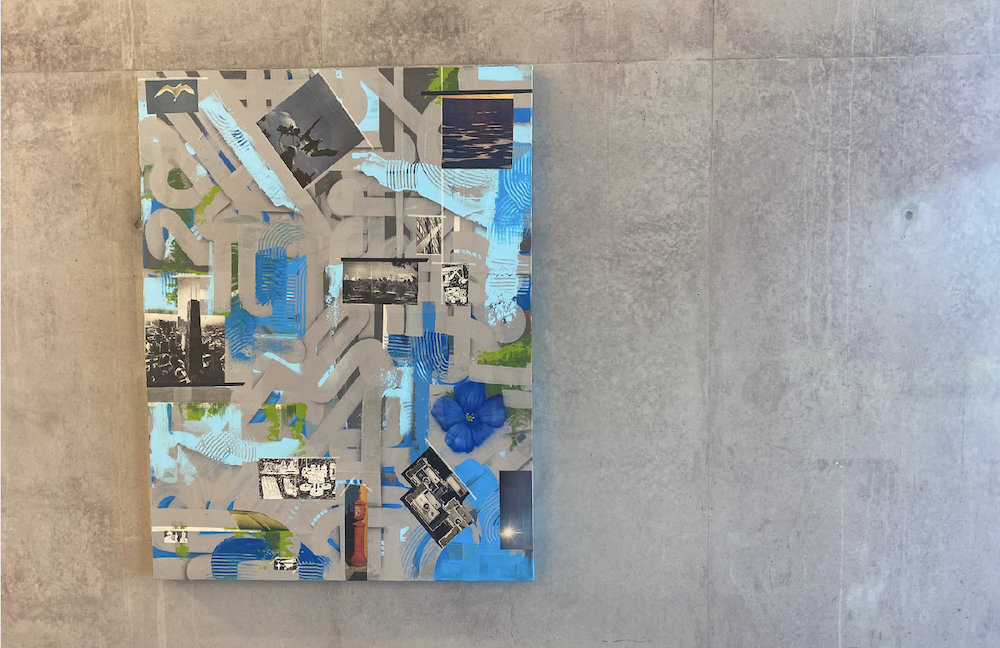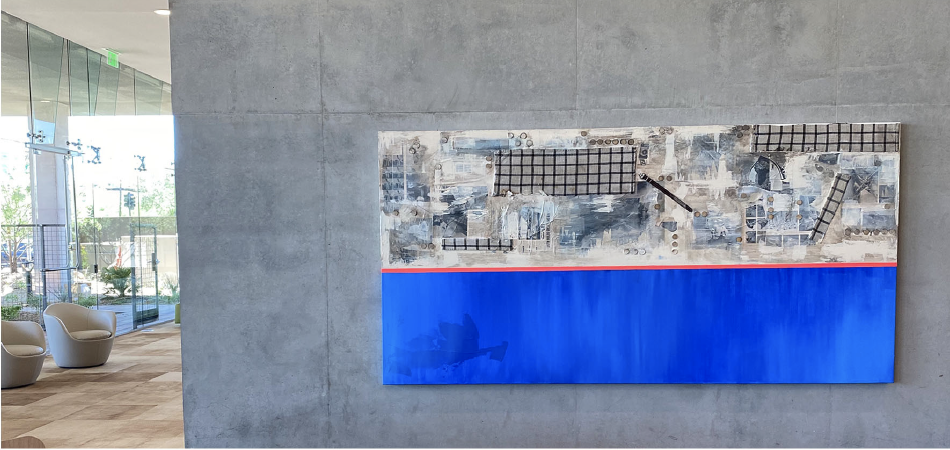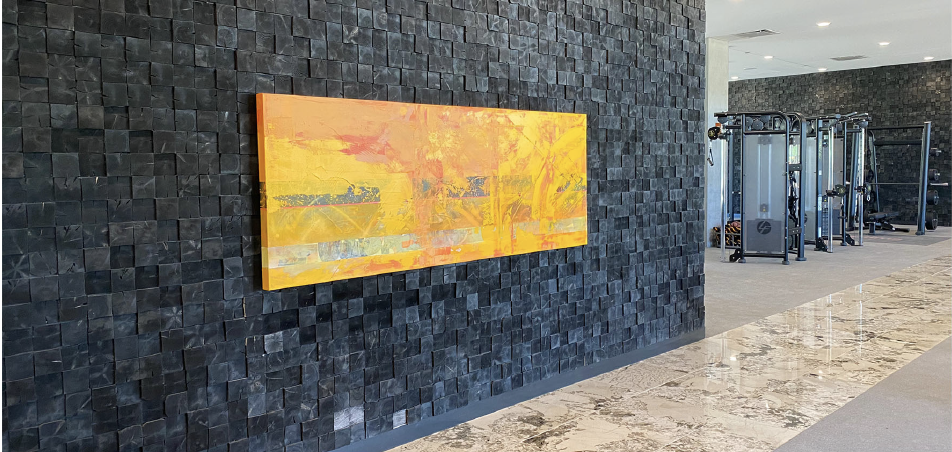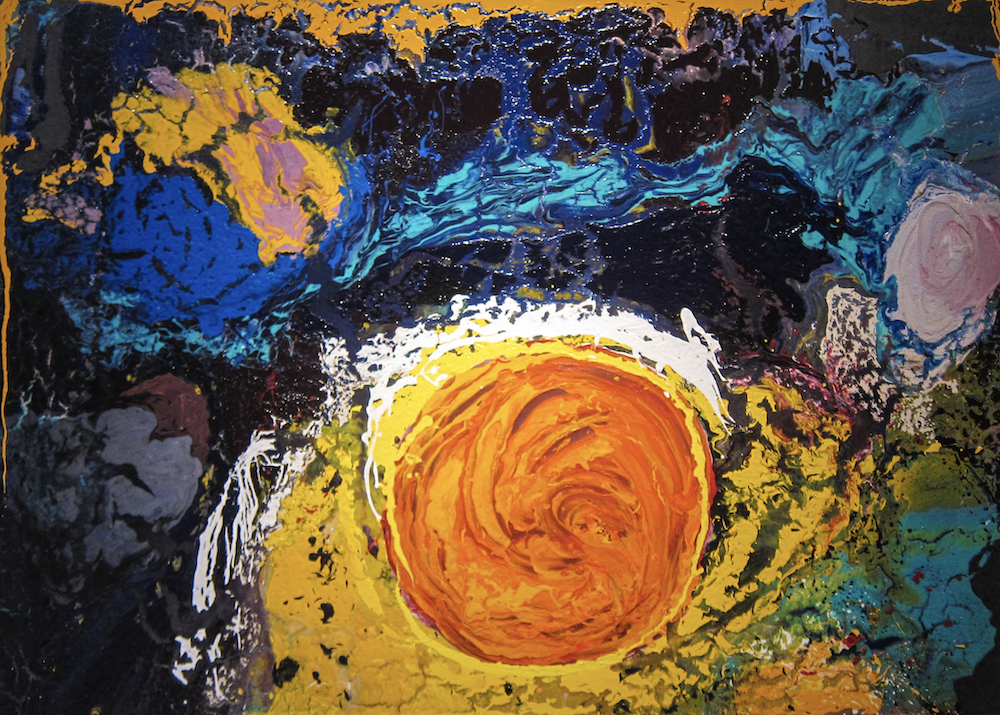Artwork at Optima is a huge part of our love of design, and what makes our spaces special at every turn. Recently, we sat down with Ellison Keomaka, an artist whose work appears throughout some of our Arizona properties, to discuss his process, his sources of inspiration and his relationship with Optima.
Tell us a bit about your background. Where does your passion for art stem from? How did you first get started as an artist?
I believe everyone is creative in their own way, and mine happens to be visual arts. I’ve had many interests and endeavors over the years, but I always enjoyed doing my own thing and set out pretty young to start my artistic career. I started off drawing vehicles, eventually navigating away from that and into comic-style artwork. Every piece paves the way for new ideas in the next creation. My style has changed quite a bit over the years and evolved with my experiences in life.

What are your preferred mediums? How do 2-D and 3-D spaces interact within your pieces?
I used to be very into realism, and I used a lot of airbrush and classic techniques. As an artist, I wanted to use more of the material found in the world around me. From soil found in distant countries to fabrics found at a craft store, I’m always searching for the next textural combination that makes something interesting. It’s fun to see these materials, textures and artifacts and make them come together in a 2-D space.
An example would be my use of vintage magazines and articles. In one of the Optima paintings, — Present Future Past — there are magazine articles from 1938, a dishtowel, watchband and wooden cutouts pressed into the piece.
How does color play a part in your work?
In my earlier works, there were more dark colors. As I developed my style, I recognized the value of color in changing human emotion. When you look at specific colors or shapes, they cause you to feel something or spark inspiration. All of that makes color an infinite playground for an artist to create.
How did you get involved with Optima?
Around 2016, I was eating lunch across from Optima Kierland while it was under construction — and it just looked so wildly different from anything else in Phoenix. I enjoy architecture, and Optima’s aesthetic caught my eye. Fast forward, and I ended up moving in there. They were looking for resident events, and I offered to do an art show; I hosted three across Optima Sonoran Village and Optima Kierland Apartments. The Optima team saw my work, and we started having conversations about commissioning pieces for 7180 Optima Kierland.
I was fortunate to have full creative reign on the layouts of each piece, which allowed me to take creative risks and challenge myself. I would consider the Optima series of paintings to be my best body of work to represent myself because each one is unique and tailor-made to fit in those spaces.

Give us some details on a favorite piece of yours at Optima. What was the inspiration behind that particular piece? How does it fit into the space at Optima?
Suppose I had to pick a favorite piece —which is always a challenge — I resonate most with Present Future Past. It has a real impact on the viewer with the contrast between the bright blue on the bottom and the upper half’s antique design. While the fluorescent pink line emits excitement of the future, the top presents a juxtaposition of a rugged, forgotten past. This painting aims to inspire us to be present, calm and grateful for occupying this time and space.
Keomaka’s color-filled, vibrant artwork mirrors the same inspired emotions that we search for in our built environment. As with all of the artwork that adorns our walls, his work tells a series of unique stories that speak to everyone who passes through our spaces. Optima certainly wouldn’t be the same without them.




